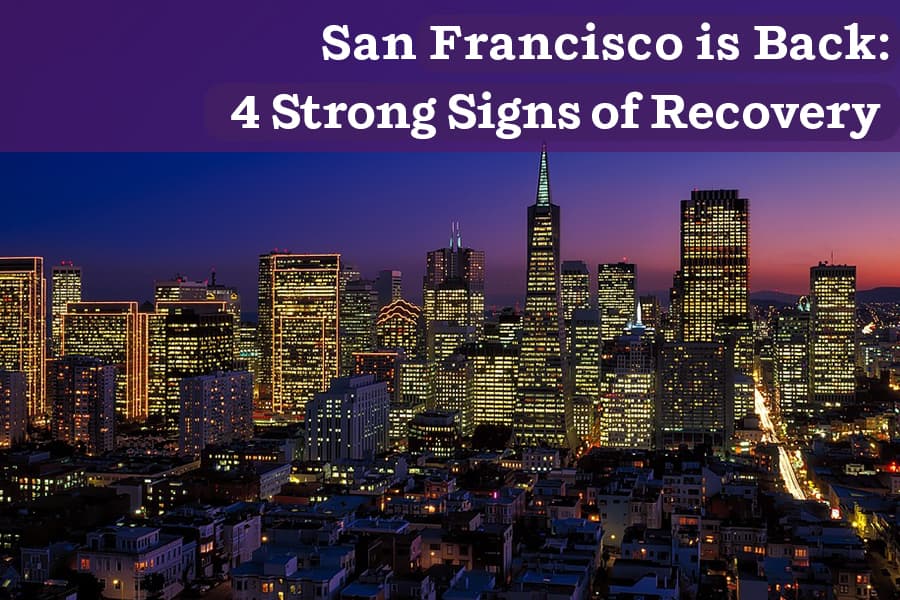Introduction
San Francisco is back, emerging from the pandemic with a renewed vigor, particularly evident in its vibrant events and entertainment industries. The city’s journey to recovery has been marked by a resurgence in tourism, cultural events, and nightlife, all of which play critical roles in revitalizing the local economy.
The revival of these sectors is not just a sign of normalcy returning, but also a testament to the resilience and adaptability of San Francisco’s community. Major events have once again started drawing crowds, filling venues, and boosting local businesses. From bustling festivals to world-class performances, the city is alive with activities that attract both residents and visitors.
Key takeaway: The flourishing events and entertainment scene signifies more than just economic recovery—it represents a cultural renaissance. As tourists flock back to experience the unparalleled charm of San Francisco, they contribute significantly to the city’s economic growth. This symbiotic relationship between cultural vibrancy and economic health underscores why San Francisco is truly back on the map as a premier destination. These are 4 of the main drivers behind the inspiring bounce back for San Francisco:
1. Startups and AI Are Surging
While companies like X (formerly Twitter) are bidding goodbye to the city, San Francisco has seen a large influx of tech startups and firms, many of which are focused on AI solutions. In fact, San Francisco is quickly becoming the AI epicenter of the US, and one of the biggest hitters in the world. Companies like OpenAI, Pear VC, Anthropic, Databricks, Scale AI, and more are heavily investing in real estate in the city. The hot tech trend is even bringing some of the big names back, with companies like Meta and Microsoft re-investing in their SF footprint in pursuit of their AI initiatives.
In fact, market demand in the third quarter of 2023 reached 5.2 million square feet – the highest demand increase since right before the pandemic. Experts note that, while tech companies are often quick to downsize in the face of adversity, the inverse is equally true. Tech firms are typically among the fastest to expand their real estate investments during times of growth. And right now, the AI industry is absolutely booming.
These new deals aren’t just good for the real estate industry. With these growing local footprints comes an increase in foot traffic for the city. More foot traffic leads directly to bolstering local businesses across the board, and helps make the city a much more attractive place to work, live, visit, and host large events.
2. Thriving Tourism Sector Fueling the Comeback
San Francisco’s tourism recovery showcases the city’s ability to bounce back and its enduring appeal. The San Francisco Travel Association’s recent report provides valuable insights into visitor numbers and spending, highlighting the crucial role of events in drawing tourists.
Visitor Numbers and Spending
The city welcomed approximately 23.1 million visitors in 2023, generating around $8.8 billion in spending. This figure highlights not just a return to pre-pandemic levels but an invigorated appetite for what San Francisco has to offer. Events, from large-scale festivals to intimate cultural gatherings, have been key drivers in this resurgence:
- Large-Scale Festivals: Events like the San Francisco International Film Festival and Outside Lands Music and Arts Festival drew thousands, significantly boosting local economies.
- Cultural Gatherings: Smaller yet impactful events such as local art walks and neighborhood fairs created consistent foot traffic, fostering community engagement.
Hotel Occupancy Rates
Improved hotel occupancy rates reflect the positive trajectory of tourism recovery. In 2023, occupancy rates rose to 64.2%, with an average daily rate (ADR) of $243.80 and revenue per available room (RevPAR) at $156.43. This surge in hotel occupancy is a promising indicator of economic vitality.
Local businesses catering to event-goers have also benefitted immensely:
- Restaurants: Increased patronage during events has revitalized dining establishments across the city.
- Retail Shops: Shops near event venues reported higher sales figures, driven by tourist spending.
- Transportation: Ride-sharing services and public transportation saw a marked uptick in usage during peak event periods.
International Visitation
Another notable indicator is the recent rapid growth in international visitation, further bolstering San Francisco’s economic landscape. International visitors grew by 26% in 2023, with China emerging as the top market, contributing $633.4 million in spending. The influx of international visitors translates into substantial economic benefits for various sectors, from hospitality to retail, and everything in between.
San Francisco International Airport (SFO) served over 50 million passengers in 2023 and projects nearly 54 million passengers for 2024. This increase further aligns with the broader trend of heightened international engagement within the city.
These indicators collectively paint a picture of a thriving tourism sector that is not just rebounding but setting new benchmarks for success.
3. Nightlife is Leading the Way
Like the rest of the country, San Francisco is still adapting to the hybrid workforce becoming the new norm, typically leading to lower daytime foot traffic in the city – roughly 56% of pre-pandemic numbers. However, recent data has shown that post 6:00pm, downtown activity jumps up to nearly 94% of pre-pandemic numbers, with many businesses actually reporting record numbers.
Events Driving Energetic Nightlife
Organized events are one of the keys to further cultivating a lively nightlife scene. From Fleet Week bringing in thousands with its air shows and ship tours to Portola attracting music lovers from around the world, these events boost economic activity and cultural involvement.
San Francisco’s nightlife revival means more than just entertainment; it’s a sign of the city’s strength and ability to adapt.
4. Reimagining Real Estate
The commercial real estate landscape in San Francisco is undergoing a significant transformation. Office vacancy rates have surged. This shift is challenging but also paving the way for innovative economic revitalization projects aimed at reimagining these spaces.
Key Trends and Challenges:
- Commercial Real Estate: The rise in office vacancy rates has prompted property owners to rethink their strategies. Many are repurposing vacant offices into mixed-use spaces that can host a variety of events, thereby injecting new life into these areas.
- Startup Scene: San Francisco’s renowned startup culture is leveraging this opportunity by occupying flexible office spaces, turning traditional business districts into hubs of innovation and activity.
- Adaptive Reuse: The increase in availability for commercial spaces also offers unique opportunities for businesses like NPU to reimagine how these spaces can be better utilized for more than cubicles, further helping to revitalize the downtown area.
These initiatives not only address current economic challenges but also set the stage for a dynamic future where events play a central role in the city’s identity.
Conclusion
While there still may be some room for growth, the fact remains that San Francisco has healed tremendously following a very difficult few years, and shows no signs of slowing down. A booming tech scene, massive tourism bumps, healthy nightlife, and a willingness to adapt all reinforce the idea that, indeed, San Francisco is back.

